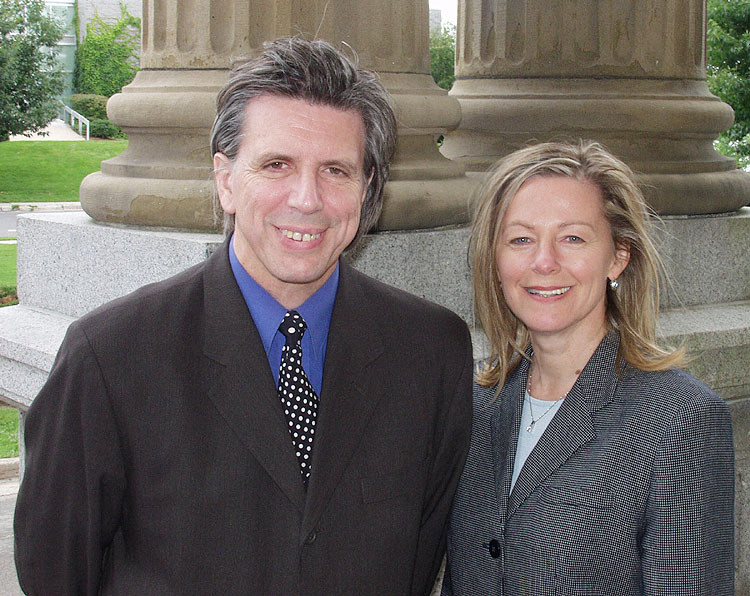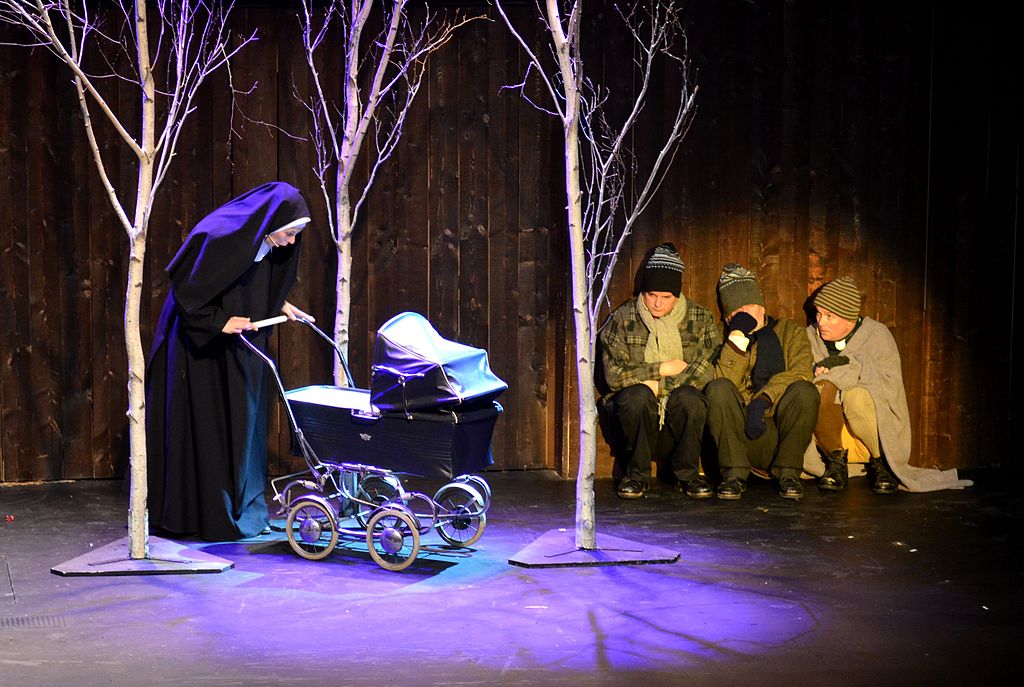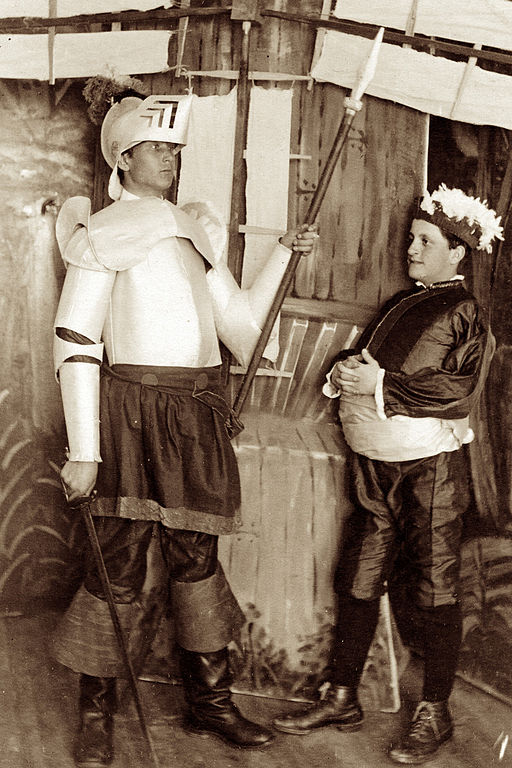
Theatre came to Acadia with the first French colonists, and by the 1970s, French-language theatre in the Maritimes was a significant part of the region’s flourishing arts scene. Although Acadian theatre has gradually become more professionalized, it remains a community activity — a living practice, rather than a literary one, contributing to the growth of an authentically Acadian theatrical repertoire.
Acadian Theatre Before Professionalization
It was at Port-Royal, in Acadia, in November 1606 that the first play was ever performed in French in North America; its title was Le Théâtre de Neptune, and the playwright was a visitor from France, Marc Lescarbot. The first Acadian-born playwright was Pascal Poirier, who wrote Les Acadiens à Philadelphie in 1875. The proceeds from performances of this play were used to help Acadians who had been imprisoned after the Caraquet riots over provincial funding for Catholic schools (see New Brunswick School Question).
The founding of collèges classiques (classical colleges) in Acadia in the late 19th century encouraged the development of French-language theatre. Productions included plays from the French repertory as well as a few plays by Acadian priests and educators such as Alexandre Braud and Jean-Baptiste Jégo. Acadian theatrical production in the first half of the 20th century was dominated by James Branch, who wrote six plays (four in French and two in English). The plays from this period were dramas with a nationalist flavour, inspired by events in the history of Acadia.
Professional Theatre: Emergence and Consolidation (1960–90)
In the late 1950s and the early 1960s, theatre in Acadia grew more dynamic, as the result of two developments: the founding of theatre companies not affiliated with colleges, such as Laurie Henri’s Théâtre Notre-Dame de Grâce, and the production of the first play by Antonine Maillet, Entr’acte, at Collège Notre-Dame d’Acadie in 1957.

The full impact of these events was felt in the 1970s and 1980s. In Moncton, an amateur company, Les Feux-Châlins (1969–76), scored a number of theatrical firsts: the first production, in 1971, of La Sagouine, written by Antonine Maillet, directed by Eugène Gallant, and starring Viola Léger, and the 1974 production of Tête d’eau, the first play by author, playwright and director Laval Goupil. The Théâtre populaire d’Acadie (T.P.A.), founded in Caraquet, NB by Réjean Poirier in 1974, produced Goupil’s second play, Le Djibou, in 1975, as well as plays by Jules Boudreau, such as Louis Mailloux (co-written with Calixte Duguay) in 1975 and Cochu et le soleil in 1977. The former Théâtre Notre-Dame de Grâce, renamed the Théâtre amateur de Moncton (1969–80), also presented works by Acadian playwrights, including the important play Les Crasseux,by Antonine Maillet, in a production directed by Jean-Claude Marcus in 1977.
Marcus was a professor in the drama department of the recently founded Université de Moncton, where a large share of Acadian theatre artists would receive their training from then on. In 1977–78, the first cohort of graduates from this department founded L’Escaouette, a co-operative theatre company that built its name through its tours of rural areas, its collective creations, its youthful audiences, and its determination to move beyond Acadian folklore and address other subjects. With Herménégilde Chiasson as its principal playwright, L’Escaouette gradually became a dominant force in the 1980s and 1990s. The company worked to develop an Acadian repertory, in particular by producing a trilogy of plays on Acadian history: Histoire en histoire (1979–80) and Renaissances au pluriel (1984–85), by Chiasson, and Les sentiers de l’espoir (1983–84), by Gérald Leblanc.
Professional Theatre: Crisis and Ferment (1990–2010)
After years of economic uncertainty, T.P.A. and L’Escaouette established themselves more firmly as theatrical institutions. In 1992, after a fire at the old convent in Caraquet that had been its home venue, T.P.A. took over a new performance space where it presented plays from the Acadian, Québec and international French-language repertoire, as well as some co-productions with L’Escaouette, including the hit comedy Laurie ou la vie de galerie (1997) by Herménégilde Chiasson.

Over the 1990s, Chiasson wrote many more plays for the increasingly professional L’Escaouette theatre company. They included the identity-themed trilogy L’exil d’Alexa (1993), La vie est un rêve (1994), and Aliénor (1997). Most Acadian plays never saw print, but two of these were exceptions, published by Perce-Neige and Les Éditions d’Acadie. Besides Antonine Maillet, whose plays were published by Leméac Éditeur, other Acadian playwrights were published by Michel Henri’s Les Édtions de L’Acadie in the 1980s and by Les Éditions La Grande Marée in the 1990s. The decades of the 2000s and 2010s saw a veritable boom in publishing of plays by new Acadian playwrights, including Mélanie Léger, Marcel-Romain Thériault, and Anne-Marie White (published by Prise de parole, a Franco-Ontarian firm) and Emma Haché (published by Lansman Éditeur, a Belgian publishing house).
In 1996, Louise Lemieux and several of her graduates from the Université de Moncton drama program, including Lynne Surette, Philip André Colette, Amélie Gosselin, and Karène Chiasson, joined forces to form Moncton Sable, an innovative theatrical collective that focused more on formal experimentation than on interpretation of text. The collective also mounted productions in collaboration with France Daigle, Paul Bossé, and other playwrights. Several smaller theatre companies also emerged in Acadia at this time, such as Le Théâtre Alacenne, co-founded by Anika Lirette and Mélanie Léger, which worked with puppets, and Satellite Théâtre, whose leading figures were Mathieu Chouinard and Marc-André Charron and which offered a highly visual, physical form of theatre.
Also during the 1990s, to encourage Acadian playwrights, L’Escaouette founded Le Festival à haute voix, a biannual series of readings of plays at various stages of development. One of the participating playwrights, Emma Haché, received a Governor General's Literary Award in 2004 for her play L’intimité. Thanks to co-productions and festivals such as the Zones théâtrales biennial, Acadian theatre attendance also grew at this time.
Continuing Theatrical Traditions
Community theatre has a long tradition in Acadia, dating back to the parish plays of the 19th century and the amateur companies that emerged from institutions of higher learning in the mid-20th century. New Brunswick has some 20 community theatre companies. Since 1999, they have co-operated in producing the Festival de théâtre communautaire en Acadie. Each year, this popular event is organized by a different regional chapter of the Conseil provincial des sociétés culturelles (an organization that promotes the arts and culture in in all Acadian and Francophone regions of New Brunswick).
In Nova Scotia, the theatre company Les Araignées du Boui-Boui was founded by Jean-Douglas Comeau in Baie Sainte-Marie in 1971. It has been recognized both nationally and internationally, in particular for its adaptations of classic French plays to Nova Scotian realities. The plays of many francophone writers from Nova Scotia, including the poet Georgette LeBlanc, were first produced by this company under Professor Normand Godin of Université Sainte-Anne, who was its director for some 20 years. In Prince Edward Island, the company La Cuisine à Mémé offered a highly popular dinner theatre every summer in the 1980s and 1990s. Though Les Araignées du Boui-Boui is much less active today and La Cuisine à Mémé is now inactive, they left their mark on the Acadian communities of their respective provinces, where French-language community theatre now continues in other forms, thanks to individual initiatives and to troupes such as the PEI-based Théâtre du Soleil Oublié.
Some schools in Acadia also have theatre programs. In New Brunswick, since 1998, the Théâtre populaire d’Acadie has organized the Festival de théâtre jeunesse en Acadie, a youth theatre festival that gives students experience in working with professional theatre infrastructure.

The same audiences attend both community and professional productions, because theatre in all its forms contributes to the dynamic culture of Acadia. In this regard, even the development of theatrical activity as a modern artistic practice is part of the cultural history of Acadian communities.
See also Acadian Literature and Contemporary Acadia.

 Share on Facebook
Share on Facebook Share on X
Share on X Share by Email
Share by Email Share on Google Classroom
Share on Google Classroom


